Search Images
Browse Content (p. 666)
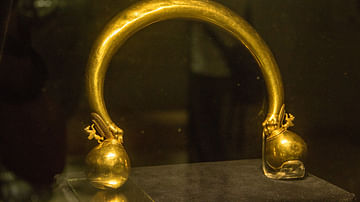
Image
Celtic Torc, Vix Burial
A gold neck torc from the Celtic Vix burial, Châtillon-sur-Seine, in northeast France close to a fortified Celtic site or oppidum and in the vicinity of at least four more burials. Discovered undisturbed, the princely burial dates to the...

Image
The Franks Casket
The Franks Casket, depicting scenes from Roman, Jewish, Christian, and Germanic tradition. Auzon, France, 8th century CE.
The British Museum, London.
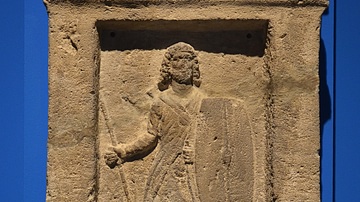
Image
Bosporan Soldier
Grave stele of Staphilos, son of Glaukias, from the Bosporan Kingdom. It depicts a soldier with the traditional Bosporan long hair and beard, and Scythian costume. It dates to the 2nd century CE and comes from the Necropolis of Panticapaeum...
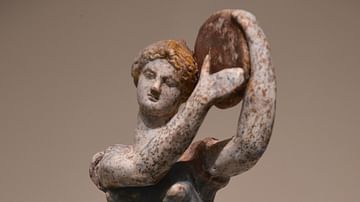
Image
Woman Playing the Tympanon
Painted terracotta statuette of a woman playing the tympanon (tambourine), 4th century BCE. Altes Museum, Berlin.

Image
A Screen Shot from the Virtual Tour of Turkey's Archaeological Museum of Antalya
A screen shot from the virtual tour of the Antalya Archaeological Museum, one of Turkey's largest museums. Thanks to the new Sanal Muze digital portal released by the Ministry of Culture and Tourism of Turkey in 2020 CE, history lovers and...

Image
Cammin Casket
A replica of the Cammin Casket (that held the relics of Saint Cordula), a masterpiece of Viking Age art, c. 1000 CE, decorated in the Mammen style and found in Kamen Pomorski, Poland. The original disappeared during World War II.
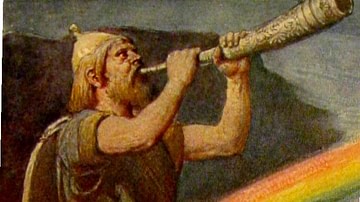
Image
Heimdall by the Bridge
"Heimdall an der Himmelsbrücke" (Heimdall stands by the bridge), illustration by Emil Doepler (1855-1922) depicting the Norse god Heimdall blowing into Gjallarhorn, first published in Walhall, die Götterwelt der Germanen, c. 1905.
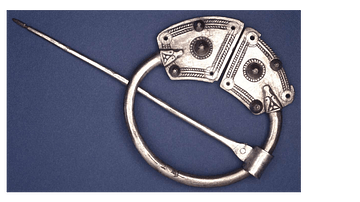
Image
Viking-Celtic Penannular Brooch
Silver bossed penannular brooch, found in Waterford, England. 9th-10th Century CE.
Hoop with trapezoidal terminals, animal heads at join between hoop and terminal. Diameter: 10.5 cm (4.1 in). (Courtesy of the British Museum)
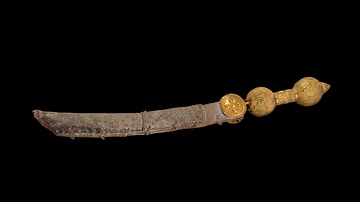
Image
Akrafena with Shark-Skin Scabbard
An Akfrefena, a type of Ashanti state sword, with a sharkskin and antelope hide scabbard. Steel blade, with wooden handle, decorated with gold leaf. Ghana. 19th Century CE. 70 cm (27.4 in) x 7.5 cm (2.9 in). (Courtesy of the British Museum)
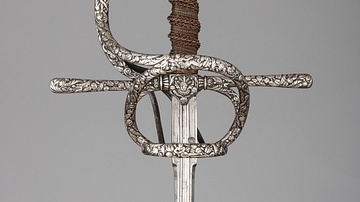
Image
German Rapier
A rapier made by German swordmaker Meves Berns c. 1610-1620 CE. Steel blade, hilt decorated with silver and copper wire. Solingen, Germany. 120.2 cm (47 5/16 in). (Courtesy of the Metropolitan Museum of Art)